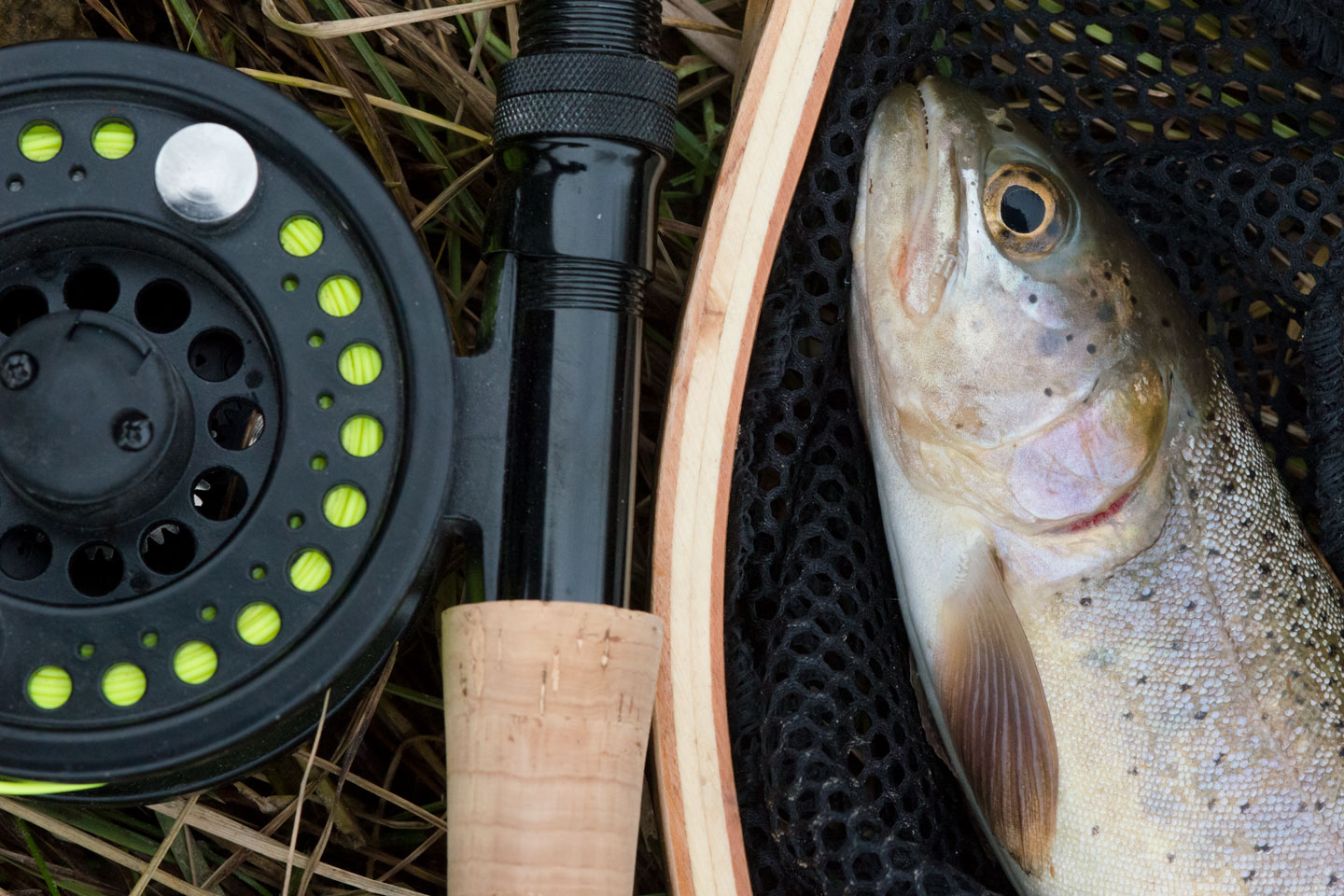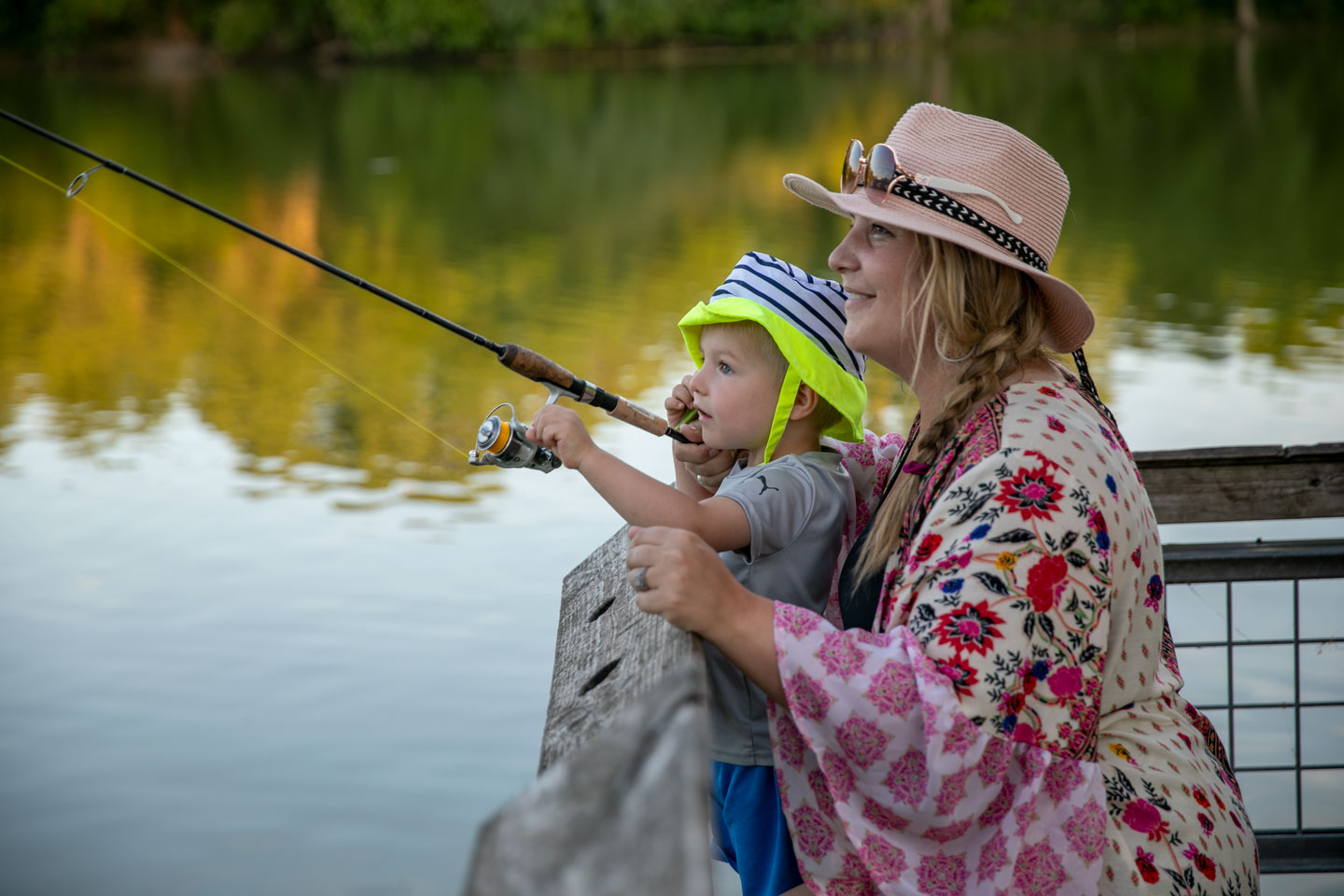Minnow - Large ID
Nebraska is home to several species of minnows.
Hypophthalmichthyes nobilis
Description: Heavy-bodied fish with large head, upturned mouth, small scales, eyes forward in lower portion of head (usually turned downward), and a keel on belly from anus to bases of pelvic fins. Native of China that was introduced to selected Arkansas waters and escaped. Filter feeder – consumes plankton (microscopic plants and animals) and suspended detritus (dead plant material). Competes with native planktivores (e.g. paddlefish, buffalo, and young of many other native species).
Note: This fish species can be very harmful for the state’s aquatic resources. If you are confident that you captured or observed this fish, contact the nearest NGPC Fisheries personnel or the Commission’s Private Waters Specialist at (402) 471-5435 and report where it was found (name of the lake, stream, river, sandpit, etc.), a legal description for the location (section, township, range) and date. Also include your name and phone number for a followup investigation.
Family: Minnow (Large)
Type: Non-Game Fish
Range: Missouri River, lower reaches of most tributary streams, and in plunge pools below dams of many southeast Nebraska reservoirs.
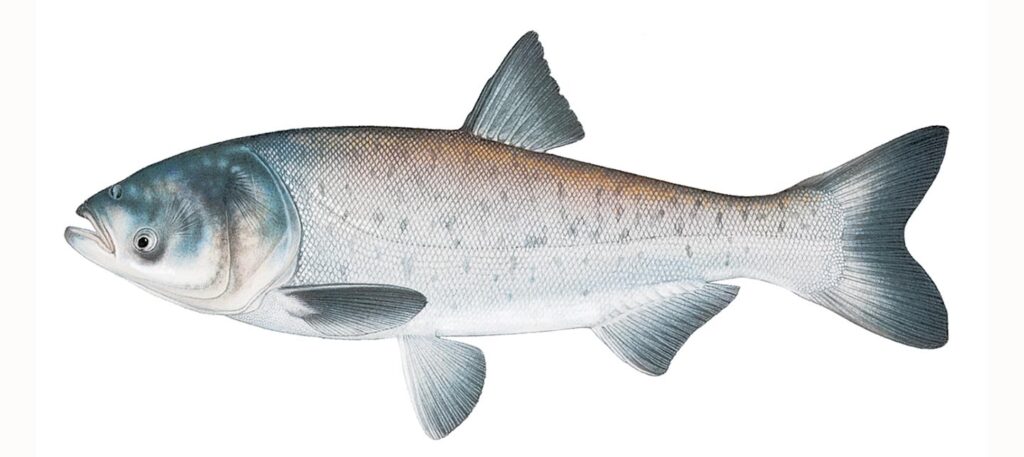
Mylopharyngodon piceus
Also known as: snail carp
Description: Although similar in external appearance to grass carp, it differs by having molariform pharyngeal teeth (located in throat at back of mouth). Native of eastern Asia that was brought to Arkansas waters and escaped. Primarily consumes molluscs and were introduced to control snails that carried nematodes (parasites) which affected cultured catfish.
Note: This fish species can be very harmful for the state’s aquatic resources. If you are confident that you captured or observed this fish, contact the nearest NGPC Fisheries personnel or the Commission’s Private Waters Specialist at (402) 471-5435 and report where it was found (name of the lake, stream, river, sandpit, etc.), a legal description for the location (section, township, range) and date. Also include your name and phone number for a followup investigation.
Family: Minnow (Large)
Type: Non-Game Fish
Range: Although black carp have not been officially documented here, they may soon show up in fish sampling surveys in the Missouri River.
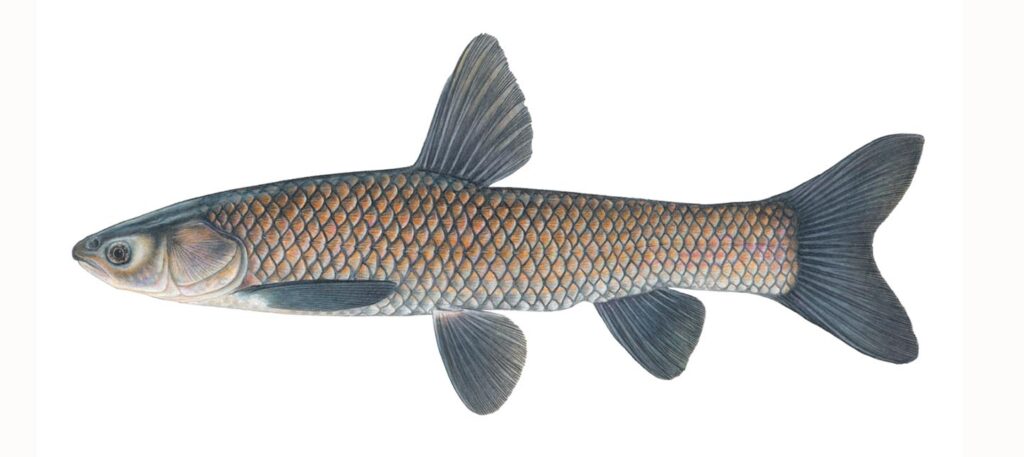
Cyprinus carpio
Also known as: carp
Description: A heavy-bodied fish with long dorsal fin, two barbels (each corner of mouth) and a stout, saw-toothed spine at front of both dorsal and anal fins. Native of Asia that was brought to Europe and then to the United States and stocked widely by various state fish commissions. They are omnivorous, consuming a variety of animal and plant material; primarily feed on the bottom but will also suck in objects floating on the surface. Their aggressive feeding activities (uprooting plants and roiling bottom sediments) can make the water very muddy. There is a genetic variation called the mirror carp that differs only by having over-enlarged scales or uneven scale pattern, or no scales.
Family: Minnow (Large)
Type: Non-Game Fish
Range: Statewide
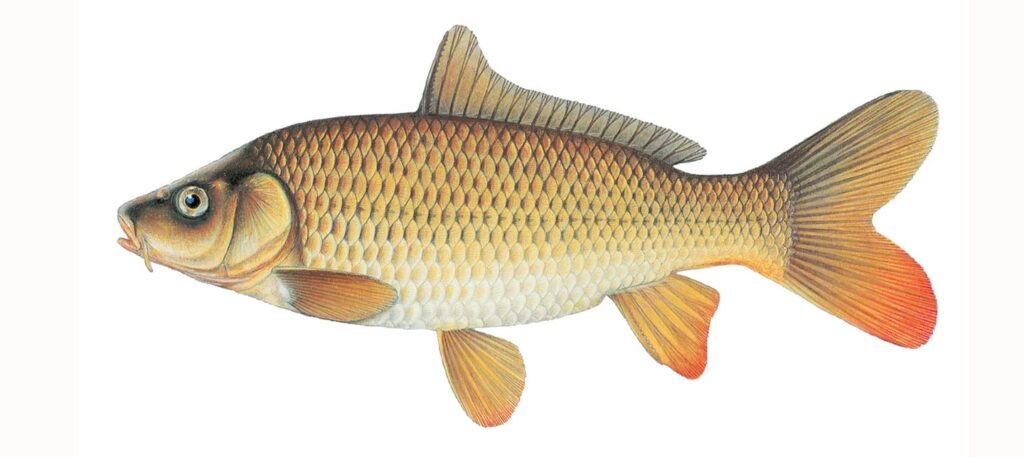
Carassius auratus
Description: Not native to the United States. Resembles common carp by having a long dorsal fin and stout, saw-toothed spine at front of both dorsal and anal fins; however, barbels are absent. Usually loses gold color in the wild. Omnivorous, feeding on much the same animal and plant material as carp.
Family: Minnow (Large)
Type: Baitfish
Range: Statewide
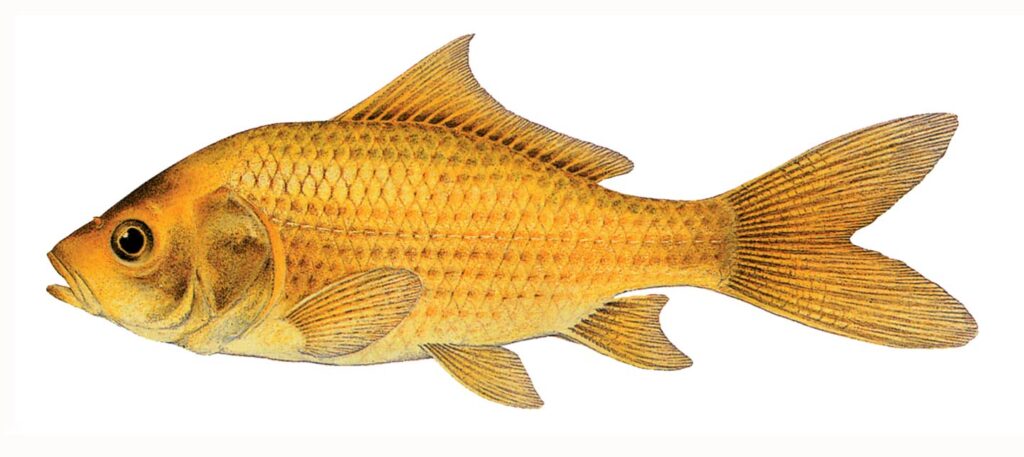
Ctenopharyngodon idella
Also known as: carp
Description: Robust, cigar-shaped fish with a broad, blunt head and terminal, horizontal mouth. Large dark-edged scales having a cross-hatched appearance. Pharyngeal teeth (located in throat at back of mouth) have deep parallel grooves. Native of eastern Asia that was brought to Arkansas waters and escaped. Jump out of water to avoid being captured. Adults have voracious appetites and primarily consume large amounts of aquatic vegetation but will also eat a wide variety of plant and animal material when preferred plants are unavailable. It is inefficient in digesting plant material, passing about half of it through undigested; the released nutrients can then cause extensive algae blooms.
Family: Minnow (Large)
Type: Non-Game Fish
Range: Missouri River and has been stocked in selected reservoirs, sandpits, and ponds statewide.
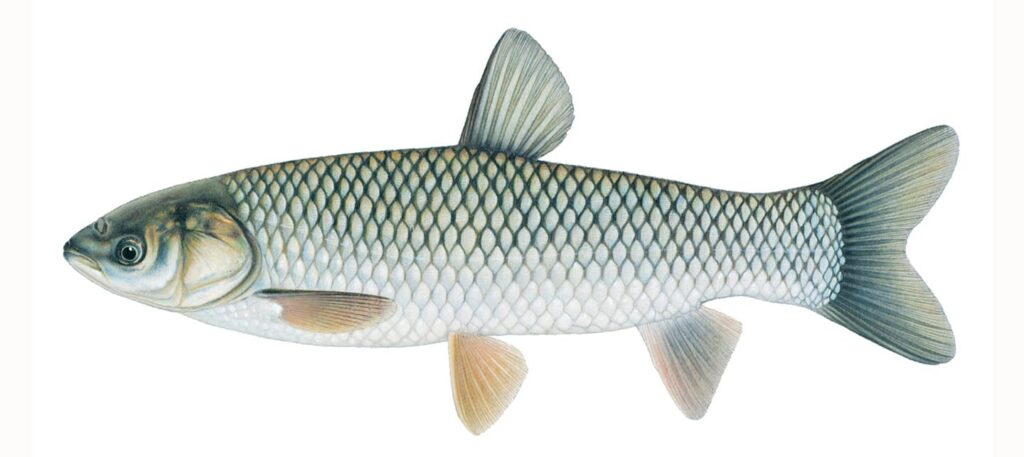
Hypophthalmichthys molitrix
Description: A silvery, heavy-bodied fish with large head, upturned mouth, small scales, eyes forward in lower portion of head (projecting somewhat downward), and a keel on belly from anus to near bases of pectoral fins. A native of China that was brought to Arkansas waters and escaped. A very efficient filter feeder that consumes zooplankton (microscopic invertebrates), detritus (particulate organic matter), and algae. Competes with native planktivores (such as paddlefish and buffalo) and young of many other native fish. Adults leap out of water when disturbed.
Note: This fish species can be very harmful for the state’s aquatic resources. If you are confident that you captured or observed this fish, contact the nearest NGPC Fisheries personnel or the Commission’s Private Waters Specialist at (402) 471-5435 and report where it was found (name of the lake, stream, river, sandpit, etc.), a legal description for the location (section, township, range) and date. Also include your name and phone number for a followup investigation.
Family: Minnow (Large)
Type: Non-Game Fish
Range: Open waters of pools and backwaters in channels of Missouri River and lower portions of tributary rivers.
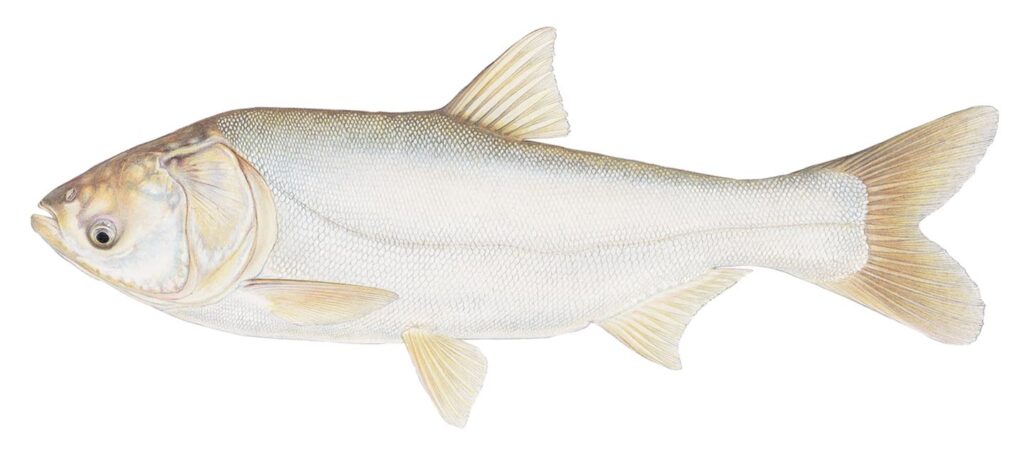
References
The Fishes of Nebraska by Hrabik, et. al (2015)
The Fish Book from NEBRASKAland Magazine (1987)Related Content
Discover other fish species and resources to angling in Nebraska.

